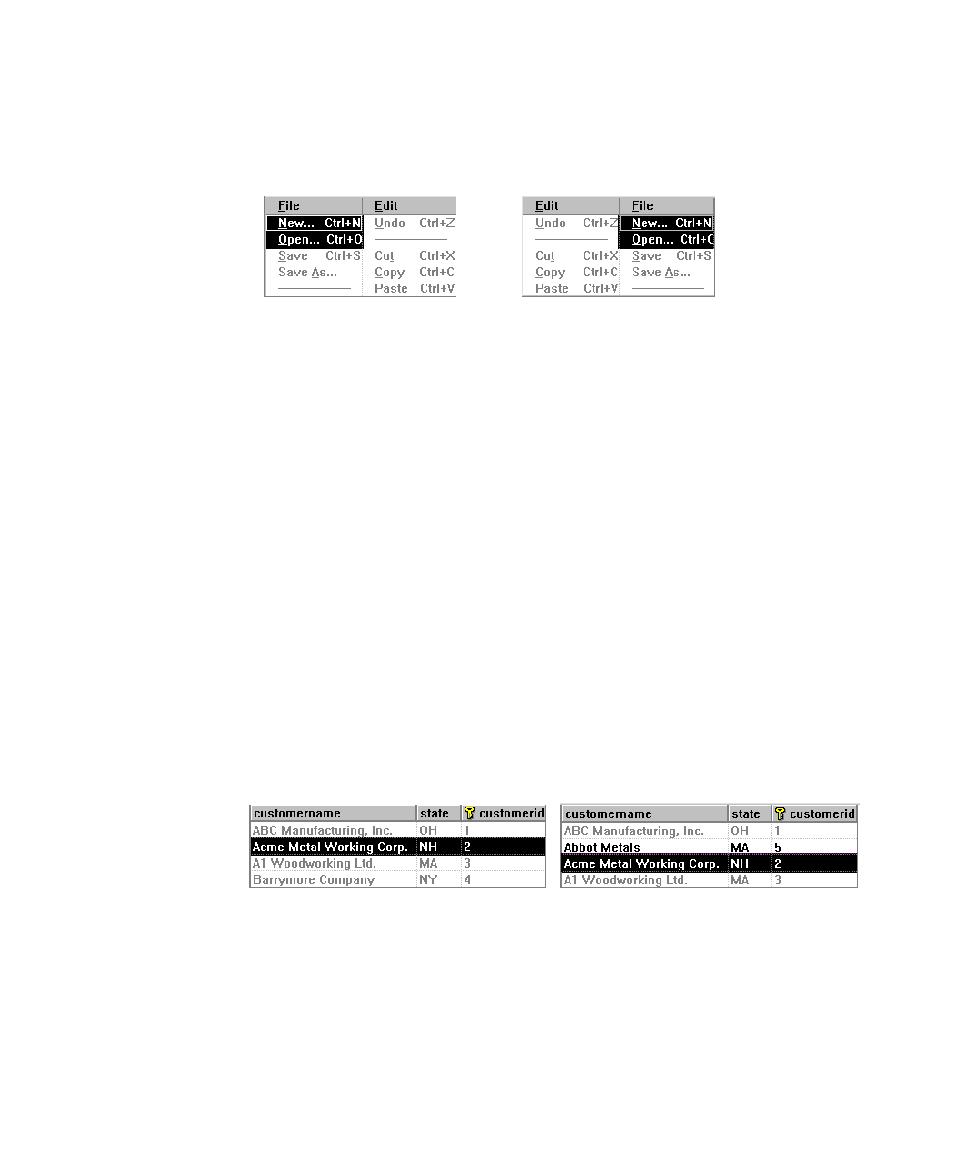
Using Rows By Key/Value
the verification point passes because the recorded values under the menu title
remain the same even though the File and Edit menus have changed positions.
playback. This method is location-independent. If rows are added or deleted, the
verification point passes as long as the recorded values in the row remain the same.
keys
add a key to a column, Robot searches for the recorded values in the key column
during playback. After Robot locates the values in the key column, it verifies that
the rest of the recorded values in each row have remained the same during playback.
column and click the right mouse button.
a key in the customerid column. During playback, Robot searches only for the
recorded value in the key column (for example, 2). After Robot locates the value in
the key column, it compares the recorded values with the baseline values. The
verification point passes because the recorded values exist even though the row
location changes because a new record was added to the database.